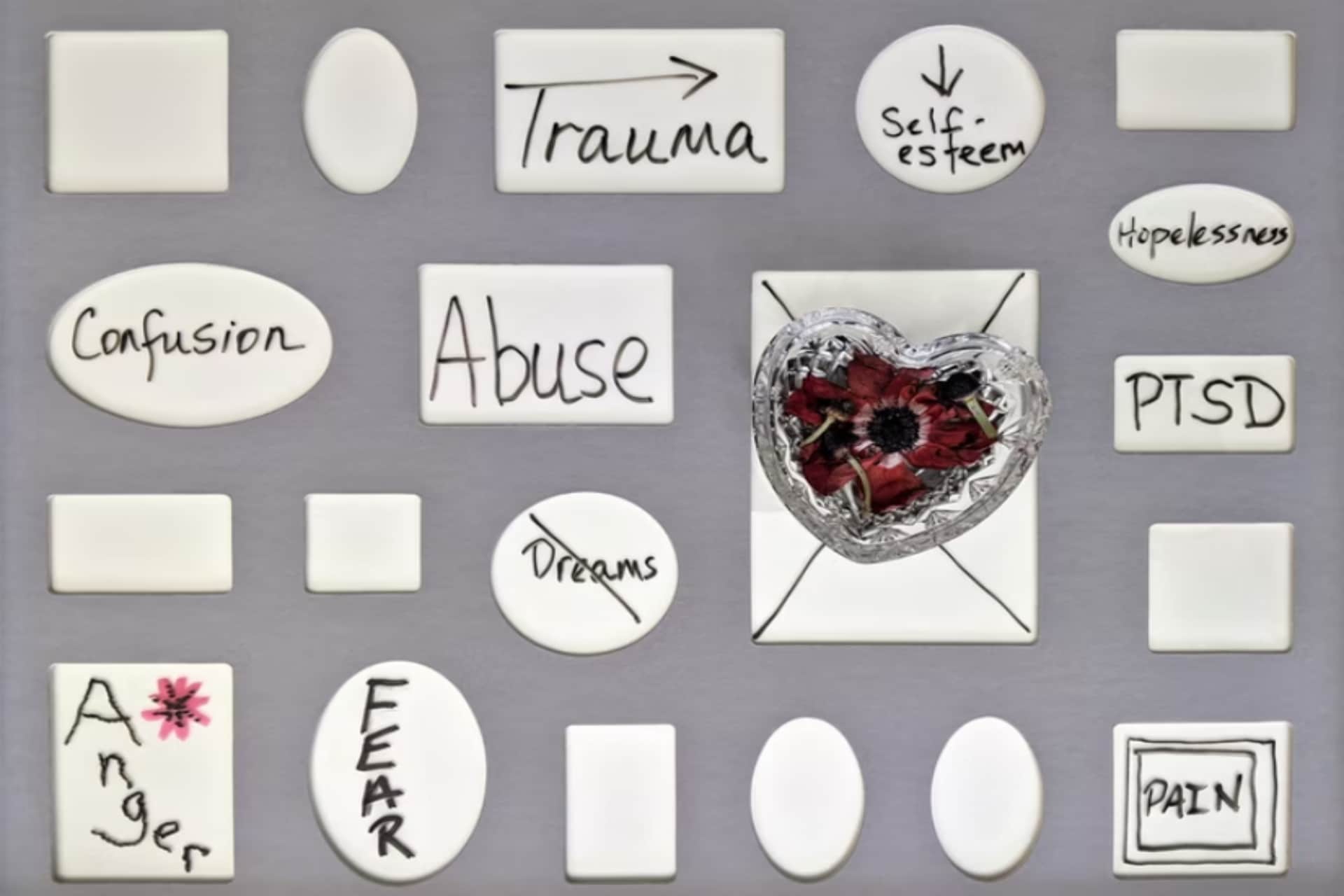PTSD statistics are worrisome. The fact is that PTSD is an issue that can affect anyone, not just war veterans. If you’re capable of experiencing trauma, you are, sadly, capable of getting PTSD from said trauma.
While they can be difficult, the numbers and facts surrounding PTSD are worth discussing. If you’re here to learn about stats on PTSD, you’ve come to the right place. We’ve gathered the most shocking, but also the most revealing post-traumatic stress disorder data for you, so keep reading.
Top 10 PTSD Statistics and Facts
- PTSD patients are estimated to attempt suicide in 20% of the cases.
- People suffering from anxiety, depression, neuroticism, or those with a family history of these issues are more likely to develop PTSD.
- There is no cure for PTSD, meaning it can last during one’s entire lifetime.
- Children can have PTSD too, and experience the same symptoms as adults with PTSD.
- An estimated 30% of Vietnam War veterans have experienced PTSD during their lifetime.
- Cognitive behavior treatment reduces symptoms in 21% to 46% of patients.
- About 55% of women veterans were sexually harassed during their service.
- About 30% of first responders develop behavioral conditions such as PTSD.
- 138,000 people in the US military were diagnosed with PTSD between 2000 and 2015.
- Main symptoms are hyper-arousal, avoiding everyday activities, and reliving the trauma.
Interesting Facts about PTSD That Will Make You Sad
1. PTSD is a clinically diagnosed psychiatric disorder that can affect trauma and victims of assault.
(Cohen Veterans Bioscience)
Post-traumatic stress and post-traumatic stress disorder are described as the feeling of pressure or fear, having difficulties sleeping, experiencing nightmares, and avoiding trauma triggers. PTSD is intense and challenging to treat, but not impossible, according to PTSD facts.
2. Children can have PTSD too, and they experience the same symptoms as adults with PTSD.
(NHS)
One of the most unfortunate PTSD facts is the fact that children can experience PTSD as well. Anyone can develop PTSD, no matter their gender, age, or background. Children that have PTSD may have nightmares, an attention deficit disorder, headaches, and more.
A child with PTSD can be misbehaving a lot, bedwetting, re-enacting the traumatizing event through playing, or avoiding anything that reminds them of the event. These are all signs of PTSD in children.
3. PTSD can cause many other psychological disorders and even lead to suicide.
(NAMI)
Sadly, PTSD can also cause anxiety disorders such as:
- Depression
- BPD (borderline personality disorder), and
- OCD (obsessive-compulsive disorder)
What’s worse is that medication for depression or OCD can amplify the symptoms of PTSD. Also, a person who has PTSD is more likely to develop substance dependence (alcohol and drugs) and abuse.
4. PTSD patients are estimated to attempt suicide in 20% of the cases.
(U.S. Department of Veterans Affairs – Suicide) (AAFP)
PTSD suicide statistics are grim. These numbers are difficult to track because suicide is often not reported. Despite women being more likely to develop PTSD, men are generally more prone to suicide than women.
PTSD Causes, Symptoms, and Treatment
5. People suffering from anxiety, depression, neuroticism, or those with a family history of these issues are more likely to develop PTSD after a traumatic event.
(AAFP)
An antisocial personality disorder can be one of many PTSD causes, as a result of a traumatic event. That type of personality itself however, isn’t enough to cause PTSD, unless a trauma triggers it.
Furthermore, children with behavioral issues at a young age, before turning 15, fall into this vulnerable category, and genetic factors may add to the vulnerability.
6. The main three PTSD symptoms are hyper-arousal, avoiding everyday activities, and reliving the trauma.
(AAFP)
Before a PTSD diagnosis, these symptoms must greatly disrupt one’s usual activities for over a month. A similar state with anxiety symptoms that lasts less than a month is called acute stress disorder.
7. PTSD therapy is the only way to treat this mental problem.
(AAFP)
Reliable PTSD treatment takes time and effort, and it requires multiple approaches. Although social support, education, or psychotherapy can benefit patients, they work the best in combination.
Sometimes even all that isn’t enough, and the patients are prescribed medication. The scientific term for this is “psychopharmacological intervention”.
8. A study shows that cognitive behavior treatment for PTSD helped between 21% and 46% of patients by reducing their symptoms.
(AAFP)
Speaking of more positive PTSD statistics, a similar study showed even better results, with 32% to 52% of patients achieving positive end-state function (50% reduction of PTSD symptoms severity). These patients only attended nine and ten therapy sessions, respectfully.
Cognitive behavior treatment can be done in many ways, with cognition and exposure therapy or stress inoculation training. All these methods have proven to be effective.
9. Right now, the only PTSD medication options approved by the FDA are Zoloft (sertraline) and Paxil (paroxetine).
(AAFP)
These drugs were useful in the acute treatment of PTSD symptoms in two separate trials that lasted for 12 weeks. A different study proved sertraline effective in preventing PTSD relapse symptoms.
10. Oral CBD, in combination with regular psychiatric care, can be beneficial for treating PTSD.
(NIH)
The benefits of CBD for PTSD are not a myth. Cannabidiol effects on PTSD patients were tested in a 2019 case study at an outpatient psychiatry clinic. Even though there were only 11 patients in the study, 10 of them had decreased symptoms after the eight-week trial. That is 91% effectiveness, which is impressive, even on a small group of patients.
The Most Hard-Hitting PTSD Military Statistics
11. More than 138,000 deployed women and men in the US military were diagnosed with PTSD between 2000 and 2015.
(Cohen Veterans Bioscience)
The numbers behind military PTSD statistics are steadily rising, but they peaked in 2012. During this period, there were around 40,000 cases of non-deployed US infantry suffering from PTSD.
12. On average, between 10% and 20% of the US infantry personnel experience PTSD.
(Cohen Veterans Bioscience)
Sadly, the infantry’s troubles didn’t end there. Often, PTSD is accompanied by anxiety, depression, and substance abuse. About 44% of the US infantry soldiers that returned from Iraq with TBI (traumatic brain injury) also had PTSD symptoms.
It’s no surprise because TBI can increase the risk of developing PTSD.
13. An estimated 30% of Vietnam War veterans have experienced PTSD during their lifetime.
(U.S. Department of Veterans Affairs)
Note that these numbers are usually measured annually. In 1980, about 15% of Vietnam veterans had PTSD.
Even though PTSD Vietnam War statistics are high, Gulf War, OIF, and OEF veterans also often have PTSD. More precisely, that’s 12% for Desert Storm veterans and 11%-20% for OIF and OEF veterans.
14. About 55% of women veterans were sexually harassed during their service.
(U.S. Department of Veterans Affairs)
Furthermore, note that 23% of women in the army reported a sexual assault, such as groping, rape, etc. About 38% of men in the military experienced sexual harassment. These are some of the worst PTSD statistics about veterans.
Sexual harassment is a serious issue, no matter which gender it affects. Veteran men heavily outnumber the veteran women. In other words, over half of the veterans harassed were men, even though women were harassed more often.
15. About 30% of first responders develop behavioral health conditions, such as PTSD and depression.
(SAMSHA)
First responders’ PTSD statistics are very high, even though PTSD is mostly linked to military personnel. Firefighters, law enforcement, doctors, and nurses, all risk the possibility of their job taking a toll on their mental health.
16. Annually, between 125 and 300 police officers commit suicide in the US.
(SAMSHA)
First responders are often exposed to the most challenging situations, and they’re first who have to react. Police PTSD statistics and psych evaluations show this mainly occurs due to their exposure to:
- exposure to violence
- Shootings
- natural disasters
- Other distressing scenes
17. Senior veterans with PTSD are at risk of not receiving adequate mental health assistance in a timely fashion.
(NCBI)
PTSD in veterans statistics is very discouraging, especially for the seniors. The group is diagnosed in the VA healthcare system, and the most vulnerable and neglected group is more than 80 years old.
These people are less likely to receive the medication and psychotherapy they need. Usually, they have to wait longer to get assistance, which can be problematic given their situation.
FAQ
What percentage of veterans suffer from PTSD?
A great deal of veterans suffered tragic losses and experienced horrific scenes that are hard to forget, many causing war flashbacks.
The percentage of veterans with PTSD is different depending on the war they were in. About 12% of the Desert Storm veterans (Gulf War) have PTSD. The Vietnam War veterans are even worse off, with about 15% diagnosed with PTSD in 1980.
Last but not least, the OIF (Operations Iraqi Freedom) and OEF (Operations Enduring Freedom) veterans are potentially the most affected. Between 11% and 20% of them have PTSD.
(U.S. Department of Veterans Affairs)
How many people struggle with PTSD in the US?
Around 8 million adult Americans experience PTSD during a given year. Of course, these are not the total numbers. They’re only a small fraction of adults who suffer from trauma. The actual numbers are much higher.
(U.S. Department of Veterans Affairs)
What are the 17 PTSD symptoms?
PTSD is a severe issue, and as such, it causes very problematic symptoms that vary from person to person. Here are the 17 most troublesome PTSD symptoms:
- Repeatedly remembering traumatic memories
- Nightmares or otherwise distressing dreams connected to the trauma
- Panic or stress as a reaction to a happening, person, or object that is somehow in relation suffered trauma
- Trembling
- Excessive sweating
- Pain
- PTSD flashbacks, or in other words reliving the trauma all over again
- Nausea
- Isolation
- Hard time concentrating
- Bursts of anger
- Agitation and oversensitivity
- Headaches
- Lightheadedness
- Anxiety
- Depression
- Phobias (such as agoraphobia, the fear of open spaces)
(NHS)
Do all trauma victims suffer from PTSD?
Yes, they do. PTSD is not reserved for veterans, first responders, and other people whose job exposes them to traumatic and stressful situations.
Anyone who has seen or experienced a trauma, such as an act of terrorism, war, rape, robbery, natural disaster, injury, traffic, or other accident, can have PTSD. Even threats of some heinous acts mentioned above can trigger PTSD in certain people.
(Psychiatry.org)
What percent of the population has PTSD in America?
Sadly, PTSD is a common occurrence among US adults. Approximately 7% or 8% of people will develop PTSD during their lifetime. Furthermore, women are more prone to developing PTSD. About 10% of all American women develop PTSD in their lives, compared to 4% of men.
(U.S. Department of Veterans Affairs)
Conclusion
Spreading awareness about PTSD is only the first step towards healing, but it is an important one. These PTSD statistics may not seem too comforting, but it takes effort to overcome all psychological problems.
PTSD shouldn’t be discarded or overlooked. People worldwide suffer from it, albeit US veterans are most often mentioned as a commonly affected group. Which were the most shocking statistics to you, the veteran PTSD statistics, or something else?
Feel free to join the discussion in the comments section below, and let us know your thoughts on the matter.
Sources:











